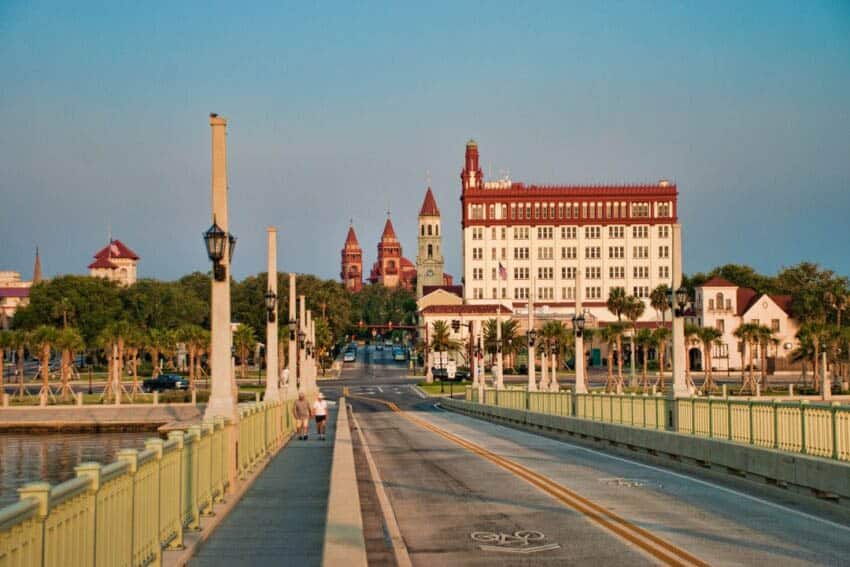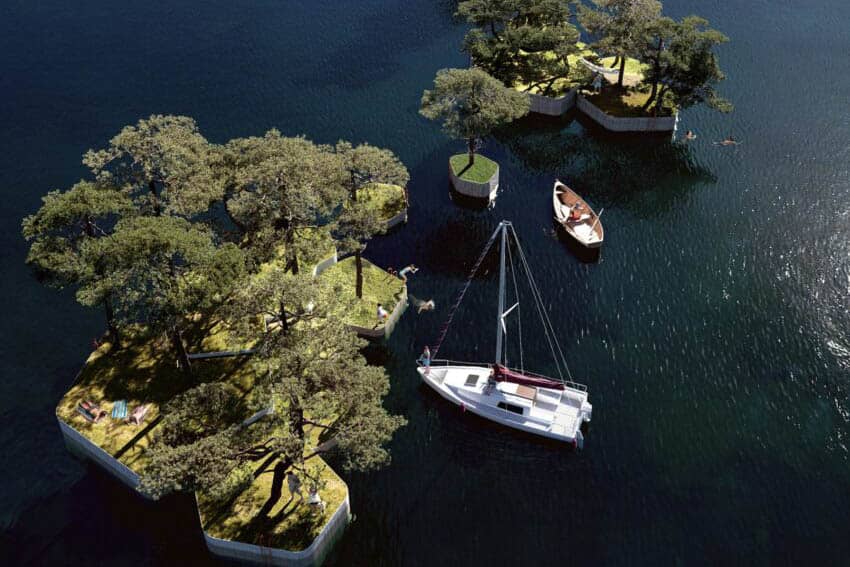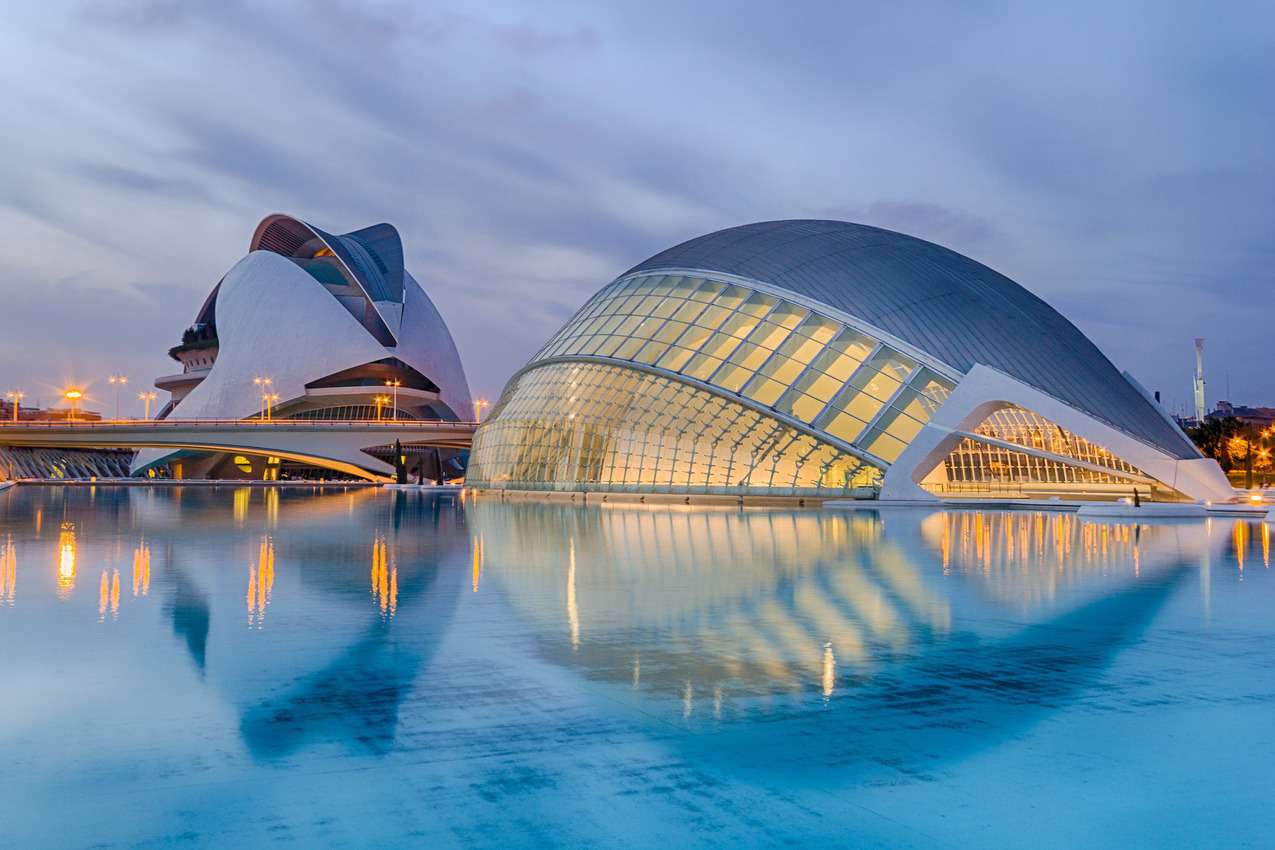
By Jared Shein
Valencia is one of Spain’s top tourist destinations. The city has a variety of inviting and exciting features from museums, Churches, and bullfights to festivals and food.
The city features a distinct old charm but is also at the forefront of modernity, with an airport addition in 2007, many bike paths and a stunning new museum and culture complex that rivals the world’s best.
City of Arts and Sciences
The City of Arts and Sciences (Ciudad de las Artes y las Ciencias in Spanish) is a 900 million euro multi-building complex that features museums, art, theatres, an aquarium and much more. Construction of the complex, designed by Santiago Calatrava and Félix Candela, began in July 1996 and continued for 9 years until its inauguration in October 2005 on Valencia Community Day.
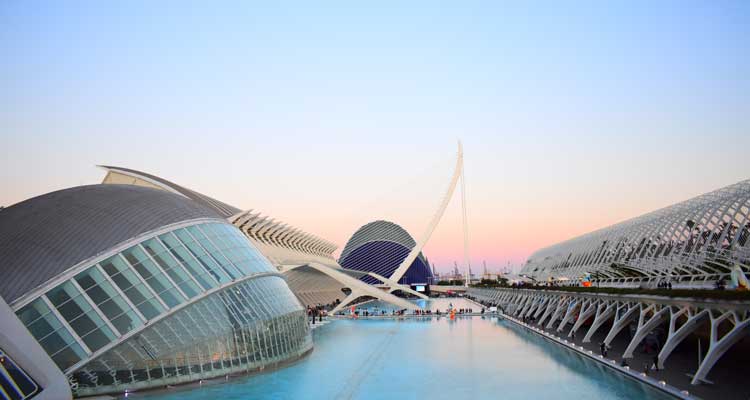
The City of Arts and Sciences is now one of the top attractions in Valencia and one of the 12 Treasures of Spain. “Just walking around the City of Arts and Sciences is a transformative experience,” says Sarah Pomeranz a recent visitor, “Walking among the unique buildings made me feel like I had been transported to the future.”
The City of Arts and Sciences Buildings
The City of Arts and Sciences is made up of seven buildings and each offers its own unique experience.
La Hemisfèric
With its completion and inauguration in 1998, La Hemisfèric was the first of the complex’s buildings to be open to the public. The building features a planetarium, as well as a large-format IMAX theatre that shows all kinds of exciting science-related movies.

The building itself was designed to look like a human eye which represents the eye of wisdom. According to the City of Arts and Sciences website, “This symbolizes the observation of the world that visitors discover by means of surprising audiovisual projections.”
El Museu de les Ciències Príncipe Felipe
In 2000, The El Museu de les Ciències Príncipe Felipe building was completed, giving locals and tourists access to a state of the art science museum.
The museum’s main objective is, “stimulating curiosity and critical thinking and at the same time surprising and amusing the public by its contents from the world of science, technology, and the environment,” and therefore always features many fun and interactive exhibits, with museum mainstays like the Electricity Theatre, Chromosome Forest, and Zero Gravity exhibit and temporary exhibits like Mars: The Conquest of a Dream, and Talking Brains.
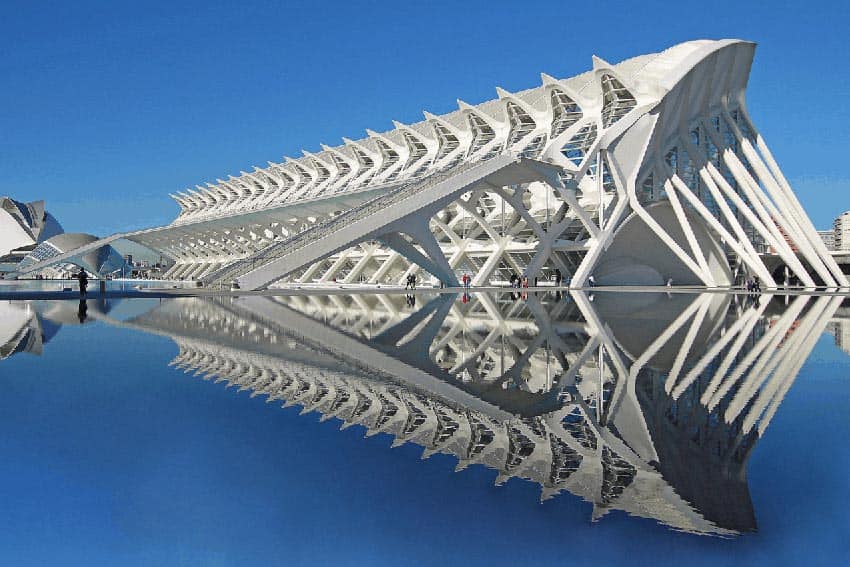
The museum also hosts a variety of activities, competitions, and conferences, like courses for teachers, the children’s council, ask a scientist. Currently scheduled conferences including The Chemical Elements in the Cinema, in Literature and in Art, The Teenage Brain, and Einstein, Black Holes and Gravitational waves.
The giant building, which was designed to look like a whale skeleton also features a basketball court, and views of the Turia Garden.
L’Umbracle
Opened in 2001, L’Umbracle is an open garden with a variety of native plants and trees, a sculpture garden featuring contemporary sculptures by many internationally acclaimed artists, and a majestic view of the rest of the complex.

The plants and vegetation in L’Umbracle are carefully curated to showcase the beauty of the Mediterranean region, and the Promenade of Art is a striking and diverse experience featuring over 10 different styles of exhibit at a time.
L’Umbracle is also home to the Astronomy Garden, which features inventions that according to the museum website will, “Help you to understand some basic concepts like the apparent movement of the stars; the difference between solar and civil time or between longitude and latitude; when solstices and equinoxes start; what is the solar declination, etc…
“And we’ll do all of this in a fun and interactive way because there are very few things that excite more our curiosity than observing the sky above.”
L’Oceanogràfic

L’Oceanogràfic is the largest oceanographic aquarium in all of Europe. The aquarium contains exhibits and animals from all of the world’s main marine ecosystems.
There are fish, jellyfish, wetland birds, tortoises, crabs, and many other species from the Mediterranean, Wetlands, Temperate and Tropical Seas, Oceans, the Antarctic, the Arctic, Islands, and the Red Sea.
L’Oceanogràfic also has many fun events, like Sleep with the Sharks (participants sleep under a large shark tank), Animalia Passport (discover dolphins and sea lions first hand!), and The Other Side of the Aquarium.
Like the other buildings in the complex, L’Oceanogràfic is exquisitely designed. It was constructed to look like a water lily and is made out of 150,000 cubic meters of concrete and 15,000 tons of steel.
El Palau de les Arts Reina Sofia
El Palau de les Arts Reina Sofia was the last of the major buildings to be completed. It is a sprawling events hall and performing arts center that now bears the title of Valencia Opera House.
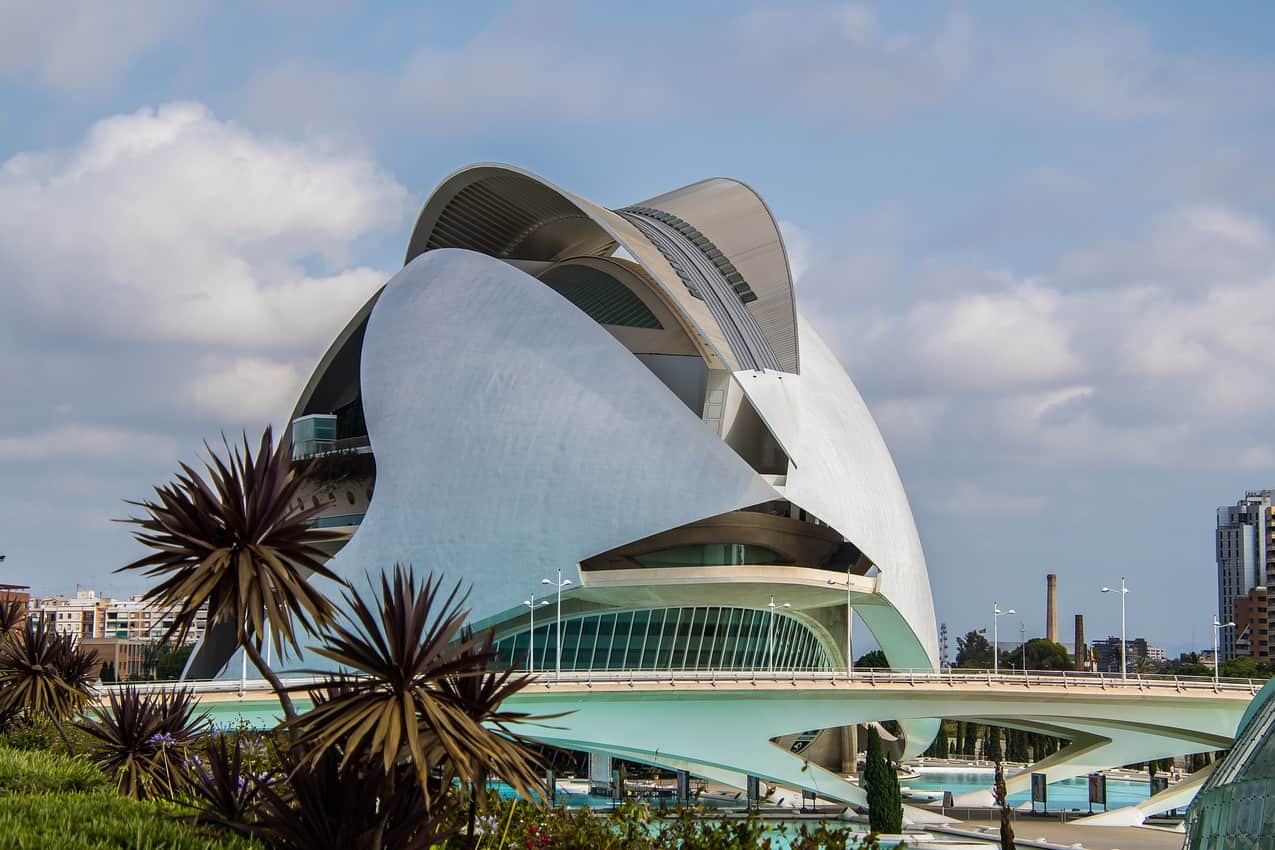
El Palau has four main spaces. The Main Hall, which according to the website, can hold over 1,400 people, has been conceived essentially as an operatic venue but can also be converted into a stage for ballet and other scenic arts, The Master Classroom, which only seats up to 400, and was designed specifically for small-group performances, the 1400 seat Auditorium, and The Martín y Soler Theatre.
Visiting the Complex
While single day visits may be the easiest, the City of Arts and Sciences website recommends a more leisurely two or three-day visit, as it would be difficult to fully enjoy all of the features of the complex in one short day.
There also multiple ticket options, with options for individual tickets to each building, an all-inclusive ticket for those interested in everything, or a combined ticket that allows access to two of the buildings of your choice.
The City of Arts and Sciences is a great place for children adults and senior citizens alike. The museum also offers guided tours, and museum membership and has a large parking facility as well as shops and restaurants.
Visit the City of Arts and Sciences website here. Tickets can be purchased in advance.
- Vodohod Russian River Cruises: Discover the Soul of Siberia - February 2, 2020
- Adventure Suites: Fun, Unique Lodging - January 28, 2020
- Geotourist: A Tour Guide in Your Pocket - January 24, 2020


